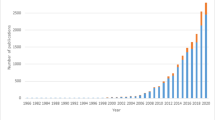Abstract
Modern medical practice is identified as a relatively recent way of approaching human ill health in the wide scope of how people have addressed sickness throughout history and across a wide range of cultures. The ideological biases of medical or “allopathic” (disease as “other” or “outsider”) practice are identified and grafted onto other perspectives on how people not engaged in modern medicine have achieved healing and health. Alternative forms of healing and health open a consideration of ethnomedicine, many forms of which are unknown and, hence, untested by modern medical research. Ethnomedicine the world over and throughout human history has displayed unique spiritual (vitalism), pharmaceutical (herbs/drugs), and mechanical (manipulation/surgery) approaches to treating illness. The argument is that modern allopathic medicine would do well to consider such “world medicine” as having valuable alternative and complementary therapies, the use of which could enhance contemporary medical advice and practice.
Similar content being viewed by others
Notes
Craige et al. (1990).
Levin and Vanderpool (1991).
Ibid., p. 41.
Bregman and Thiermann (1995).
Grossinger (1995).
Micozzi (1996).
Grossinger, I, Origins, p. 227.
Ibid., p. 257.
Cassidy (1996).
Ibid., p. 19.
Ibid.
See Eliade (1964) for a definitive study of shamanism.
Harner (1982).
Eliade, p. 5.
Harner, p. 21.
Many forms of alternative and complementary therapies are being put to the text of scientific trials with a view to appealing to allopathic researchers and practitioners on familiar experimental grounds. This is especially the case when it comes to vitamin and mineral supplements, where manufacturers are engaged in research and development programs that are modelled on the experimental clinical trials used by large pharmaceutical companies to test the efficacy of drugs those companies seek to market. When this occurs, alternative and complementary therapies can be said to undergo “scientising.” By this they may not necessarily be abandoning the ideology of elementalism, but are certainly emphasising the scientific principles of allopathy. This may owe more to the necessities of living in a market economy than it may to the requirements for effective healing.
Hultkrantz (1968).
Ibid.
Ibid., pp. 33–34.
Ibid., p. 35.
Ibid., pp. 35–36.
Ibid., p. 41.
Ibid., p. 42.
Ibid.
Ibid., pp. 42–43.
Grossinger (1995).
Ibid.
Ibid., pp. 130–131.
Lord Herder, quoted in Schiötz and Cyriax (1975).
Grossinger, I, Origins, p. 145.
References
Benson, H., & Stark, M. (1997). Timeless healing: The power and biology of belief. New York: Simon and Schuster.
Bregman, L., & Thiermann, S. (1995). First person mortal: Personal narratives of illness, dying and grief. New York: Paragon House.
Cassidy, C. (1996). Cultural context of complementary and alternative medicine systems. In M. Micozzi (Ed.), Fundamentals of complementary and alternative medicine (pp. 18–20). Foreward by C. Everett Koop. New York and London: Churchill Livingstone.
Craige, F. C., Jr., Larson, D. B., & Liu, I. Y. (1990). References to religion in the journal of family practice: Dimensions and valence of spirituality. The Journal of Family Practice, 30(4), 477–480.
Diószegi, V. (1968). Tracing shamans in Siberia: The story of an ethnographical research expedition (B. Anite Rajkaytrans, Trans.). New York: Humanities Press.
Diószegi, V., & Hoppál, M. (Eds.). (1978). Shamanism in Siberia (S. Simon, Trans.). Budapest: Akadémiai Kiadó.
Dossey, L. (1993). Healing words: The power of prayer and the practice of medicine. San Francisco: HarperSanFrancisco.
Eliade, M. (1964). Shamanism: Archaic techniques of ecstasy. Translated from the French by Willard R. Trask. Bollingen Series LXXVI. Princeton: Princeton University Press.
Grossinger, R. (1995). Planet medicine: Origins and modalities (Vol. 2). Berkeley: North Atlantic Books.
Harner, M. J. (1982). The way of the shaman: A guide to power and healing. New York: Bantam.
Hultkrantz, Å. (1968). Ecological and phenomenological aspects of shamanism. In V. Diószegi (Ed.), Tracing shamans in Siberia: The story of an ethnographical research expedition (pp. 27–58) (A. Rajkay Babó, Trans.). New York: Humanities Press.
Levin, J. S., & Vanderpool, H. Y. (1991). Religious factors in physical health and the prevention of illness. Prevention in Human Services, 9(2), 41–64.
Micozzi, M. (Ed.) (1996). Fundamentals of complementary and alternative medicine. Foreward by C. Everett Koop. New York and London: Churchill Livingstone.
Schiötz, E. H., & Cyriax, J. (1975). Manipulation past and present. London: William Heinemann Medical Books.
Author information
Authors and Affiliations
Corresponding author
Rights and permissions
About this article
Cite this article
Hutch, R.A. Health and Healing: Spiritual, Pharmaceutical, and Mechanical Medicine. J Relig Health 52, 955–965 (2013). https://doi.org/10.1007/s10943-011-9545-x
Published:
Issue Date:
DOI: https://doi.org/10.1007/s10943-011-9545-x




